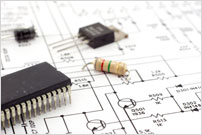February 2015 Issue
A summary of this month's contents.
Teach-In 2015
Discrete Linear Circuit Design

A brand new educational series focusing on discrete linear circuit design for beginners. Our team of tutors Mike and Richard Tooley – also known for their fantastic Raspberry Pi Teach-In 2014 series – focus on the nuts and bolts of electronic circuit design, with practical ideas for designing, simulating and constructing simple circuits using basic so-called “discrete” components.
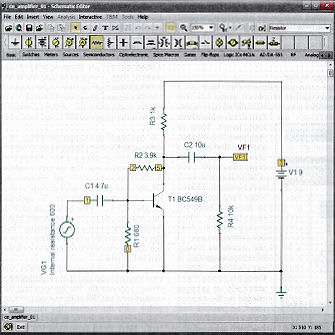 Teach-In 2015 offers readers an opportunity to acquaint themselves better with these workhorses of electronics wizardry. Some classic transistor design techniques are analysed and simulated in depth, and will be followed by more Teach-In tutorials on circuit design using TINA and Circuit Wizard software.
Teach-In 2015 offers readers an opportunity to acquaint themselves better with these workhorses of electronics wizardry. Some classic transistor design techniques are analysed and simulated in depth, and will be followed by more Teach-In tutorials on circuit design using TINA and Circuit Wizard software.
In Part One, we discover transistors and a classic gem of a two-transistor pre-amplifier is designed, analysed with simple software and the constructed. So whether you just want an electronics refresher or maybe apply new design tools to classic circuitry, or you seek an essential foundation in discrete electronics, don’t miss the theory and practical projects of Teach-In 2015, starting in the February 2015 issue!
“Tiny Tim” Stereo Amplifier (Part 2)
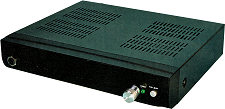
Tiny Tim is a low-cost, high quality 10W amplifier that’s ideal for flat panel TVs, MP3 players and more and also ideal for our Tiny Tim Loudspeaker System (October 2014) . It makes use of a current project pcb (our Headphone Amplifier, October 2014) and it teams up with a commercial DAC to offer a Toslink or S/PDIF input. Suits 4-8 ohm speakers, headphones and ear buds, short circuit protected. A great project for audio enthusiasts wanting to enhance an audio product, the Tiny Tim Stereo Amplifier is easy to build and uses common, low cost parts.
In Part Two this month, assembly of the amplifier and power boards is described, including full assembly drawings and photos, plus practical details of the inductor construction to help you build this amazing amplifier with complete confidence. Final setting up details follow next month.
PortaPAL-D (Part 3)
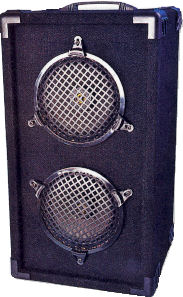 The PortaPAL-D is a go-anywhere Portable PA system that has enough power to blow your socks off!
The PortaPAL-D is a go-anywhere Portable PA system that has enough power to blow your socks off!
There’s lots to get your teeth into in this top quality project with enough to satisfy the hungriest audio enthusiast! Our articles provide full constructional details in colour to enable you to complete this project in confidence.
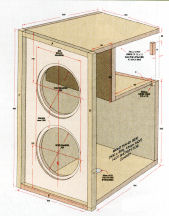 In Part 3 this month, the practical details of cabinet construction are shown to enable the housing to be fabricated, and then your PortaPAL-D is finished to a professional standard that you will be proud of!
In Part 3 this month, the practical details of cabinet construction are shown to enable the housing to be fabricated, and then your PortaPAL-D is finished to a professional standard that you will be proud of!
Audio Delay for PA Systems (Part 1)

One of the problems of attending large hall or concert venues is that the PA system drives multiple loudspeakers which can generate propagation delays around the sound landscape. The distances between different speakers can make it hard for listeners to enjoy the sound because the overall effect is ‘muddied’ by multiple speakers.
A good workaround is to introduce a time lapse into the audio signal, say for the rear speakers, which is exactly what this project does: an audio delay of up to 640 milliseconds to help ‘synchronise’ the audio throughout the venue, offering more prospect of hearing a uniform audio signal no matter where they are located.
The Audio Delay project can operate in stereo mode to generate one delay period, or if two delays are required for multiple setups then it can operate with two separate channels, each with their own delay. The low distortion design uses a WM8731 audio CODEC with the latest PIC32 microcontroller that has a digital audio interface. A longer delay (up to 6 seconds) can be provided by adding an optional 1MB SRAM and it can also be utilised for providing echo or reverb.
In Part 1 this month, circuit board assembly is described, and Part 2 next month shows some adaptations for pedal on-off control and USB power options. Free source code downloadable from our Library.
Also in this issue
- Techno Talk – detecting radio signals through dental fillings, and exposing ‘phoney fuses’ with “overblown” specifications
- Net Work – Avast’s Home Network Security tool, and applications for the Kingston Data Traveler Locker+ G3 secure memory key
- Interface – Raspberry Pi GPIO serial A/D converter
- Audio Out – Test bench amplifier (Part 3)
- Max’s Cool Beans – Max explains more classic moving coil meters for his Steampunk project
- PIC n MIX – adding PWM to the development board to control servos, LEDS etc.
- Review: Zeal Electronics’ RPI16IN 16-input optically isolated board for the Pi
EPE is packed with practical electronics projects and theory for the hobbyist. You can order a printed copy of EPE for delivery to your door (worldwide), or try the PDF Version (needs Adobe Reader for Windows), or the Pocketmags for your mobile device. Subscribe now!
Source code and artwork, PIC n MIX
0215.zip
PCB artwork
As from July 2013 issue PCB artwork is available free to subscribers only.
Non-subscribers may purchase artwork files for a nominal sum. Please contact our Orders Dept for information or to place an order.
EPE Printed Circuit Boards
We can supply ready-made printed circuit boards (8-digit order codes) to the original design specification via mail order or from our Online Shop.

